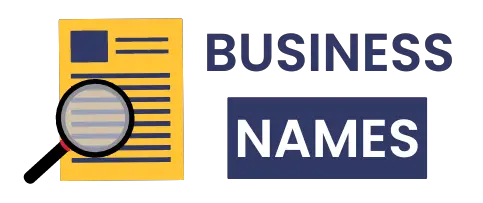Hitting 50 feels like a financial wake-up call. You check your 401(k) balance and wonder if you’ll ever have enough to retire comfortably.
High fees eat into your returns. Limited investment options frustrate you. Multiple old accounts create confusion.
Meanwhile, time keeps ticking away, and you’re stuck watching your retirement dreams shrink.
I faced this exact situation when I turned 50. So I moved my 401(k) and made one simple change that completely transformed my retirement outlook.
This decision added years of financial security to my future. Here’s exactly what I did and why it worked so well.
Why Move a 401(k) After 50?

Reaching your fifties changes everything about retirement planning. Your focus shifts from aggressive growth to protecting what you’ve built while maximizing every opportunity to save more.
- Better investment options: Many employer plans limit you to expensive mutual funds with high fees. Moving opens access to low-cost index funds and ETFs.
- Lower costs overall: IRAs typically offer reduced expense ratios and eliminate administrative fees that eat into your returns year after year.
- Simplified management: Consolidating multiple old accounts makes rebalancing easier and gives you a clearer picture of your total retirement wealth.
- Greater flexibility: IRAs provide more control over investment choices, withdrawal strategies, and estate planning options than most employer plans allow.
- Tax planning opportunities: Rolling over gives you more sophisticated options for managing your tax burden in retirement through strategic withdrawals.
The One Change: Embracing Catch-Up Contributions

Turning 50 unlocks a powerful tool that younger savers cannot access. The IRS allows those 50 and older to contribute significantly more to their retirement accounts each year.
For 2025, this means adding an extra $7,500 beyond the standard $23,500 limit. This change transformed my retirement trajectory more than any other single decision I made.
While moving my 401(k) provided better investment options and lower fees, maximizing these additional contributions created the biggest impact on my future financial security. The numbers speak for themselves when you calculate the long-term growth potential.
Most people approaching retirement worry they haven’t saved enough. These catch-up contributions offer a legitimate way to accelerate your savings during your highest earning years.
Taking full advantage requires adjusting your budget and potentially your lifestyle, but the payoff makes every sacrifice worthwhile for your future self.
Why Catch-Up Contributions Matter?

Your final working years represent your last opportunity to accumulate substantial wealth for retirement. These additional contributions can make or break your financial security.
- Accelerated wealth building: That extra $7,500 annually compounds over 10-15 years, potentially adding hundreds of thousands to your retirement nest egg.
- Tax advantages now: Traditional contributions immediately reduce your current taxable income, providing substantial tax savings during your peak earning years.
- Recovery opportunity: If you started saving late or experienced setbacks, catch-up contributions help close the gap between where you are and where you need to be.
- Compounding power: Even with fewer years until retirement, the mathematical force of compound growth still works in your favor with consistent contributions.
- Peace of mind: Knowing you’ve maximized every available opportunity reduces retirement anxiety and builds confidence in your financial future.
How I Did It: The Rollover Process

Moving retirement money requires careful execution to avoid costly mistakes. One wrong step can trigger taxes and penalties that wipe out years of potential gains.
- Choose the right destination: Research low-cost providers with excellent investment options. Compare expense ratios, fund selections, and customer service ratings before deciding.
- Request direct rollover: Have your old plan administrator send funds directly to your new custodian. Never take possession of the money yourself.
- Avoid the 60-day rule: Indirect rollovers create unnecessary risk. Missing the 60-day deadline to redeposit funds triggers taxes and penalties on the entire amount.
- Monitor the transfer: Stay in contact with both providers to ensure smooth processing. Transfers can take several weeks, and communication prevents problems.
- Reinvest immediately: Once funds arrive, select appropriate investments based on your timeline and risk tolerance. Sitting in cash loses valuable growth time. Prefer investing in stocks, rental properties, gold, etc.
Risks to Consider When Moving Your 401(k)

Transferring retirement funds isn’t always the right choice. Several potential drawbacks require careful consideration before making this important decision.
- Loss of Rule of 55: Leaving your job at 55 or older allows penalty-free 401(k) withdrawals. Rolling to an IRA eliminates this valuable option permanently.
- Company stock complications: Net Unrealized Appreciation benefits on employer stock disappear when rolling to an IRA, potentially costing thousands in tax advantages.
- Loan access restrictions: Some 401(k) plans allow loans against your balance. IRAs don’t offer this option if you need emergency access to funds.
- Creditor protection differences: 401(k)s often provide stronger protection from creditors than IRAs, depending on your state’s laws and personal circumstances.
- Transfer mistakes: Handling rollovers incorrectly can trigger immediate taxation and penalties. Professional guidance helps avoid these expensive errors.
Withdrawal Rules After 50 to Keep in Mind

Understanding access to your money becomes crucial as retirement approaches. Different account types and ages create varying rules that impact your withdrawal strategy.
Age 59½ remains the standard threshold for penalty-free distributions from most retirement accounts, but exceptions exist that could benefit your situation.
The Rule of 55 provides early access to 401(k) funds if you leave your job at 55 or older. This rule only applies to the specific employer plan you’re leaving, not previous employers’ accounts or IRAs.
Rolling money into an IRA permanently eliminates this option, which could matter if early retirement becomes necessary.
Roth accounts follow different rules entirely. Contributions can always be withdrawn tax and penalty-free since you’ve already paid taxes on that money.
Earnings remain restricted until age 59½ and require the account to be open for at least five years. Understanding these nuances helps you plan the most tax-efficient withdrawal strategy for your specific retirement timeline and needs.
Additional Tip: Adjust Your Investment Strategy as You Age

Time becomes your enemy as retirement approaches. Market downturns that once provided buying opportunities now threaten your financial security when you have limited recovery time.
- Reduce portfolio risk: Shift from aggressive growth stocks to balanced portfolios that prioritize capital preservation over maximum returns during volatile periods.
- Follow age-based allocation: Consider holding your age in bonds as a starting guideline, though personal circumstances should ultimately determine your specific allocation strategy.
- Rebalance regularly: Review your portfolio at least annually and make adjustments to maintain your target risk level as market movements alter your intended allocation.
- Protect accumulated wealth: Focus on preserving what you’ve built rather than chasing the highest possible returns when recovery time is limited.
- Seek professional guidance: Consider working with a financial advisor during this transition period, as the stakes are higher and the margin for error is smaller than earlier in your career.

